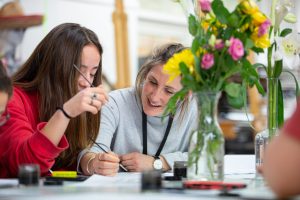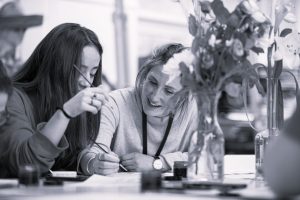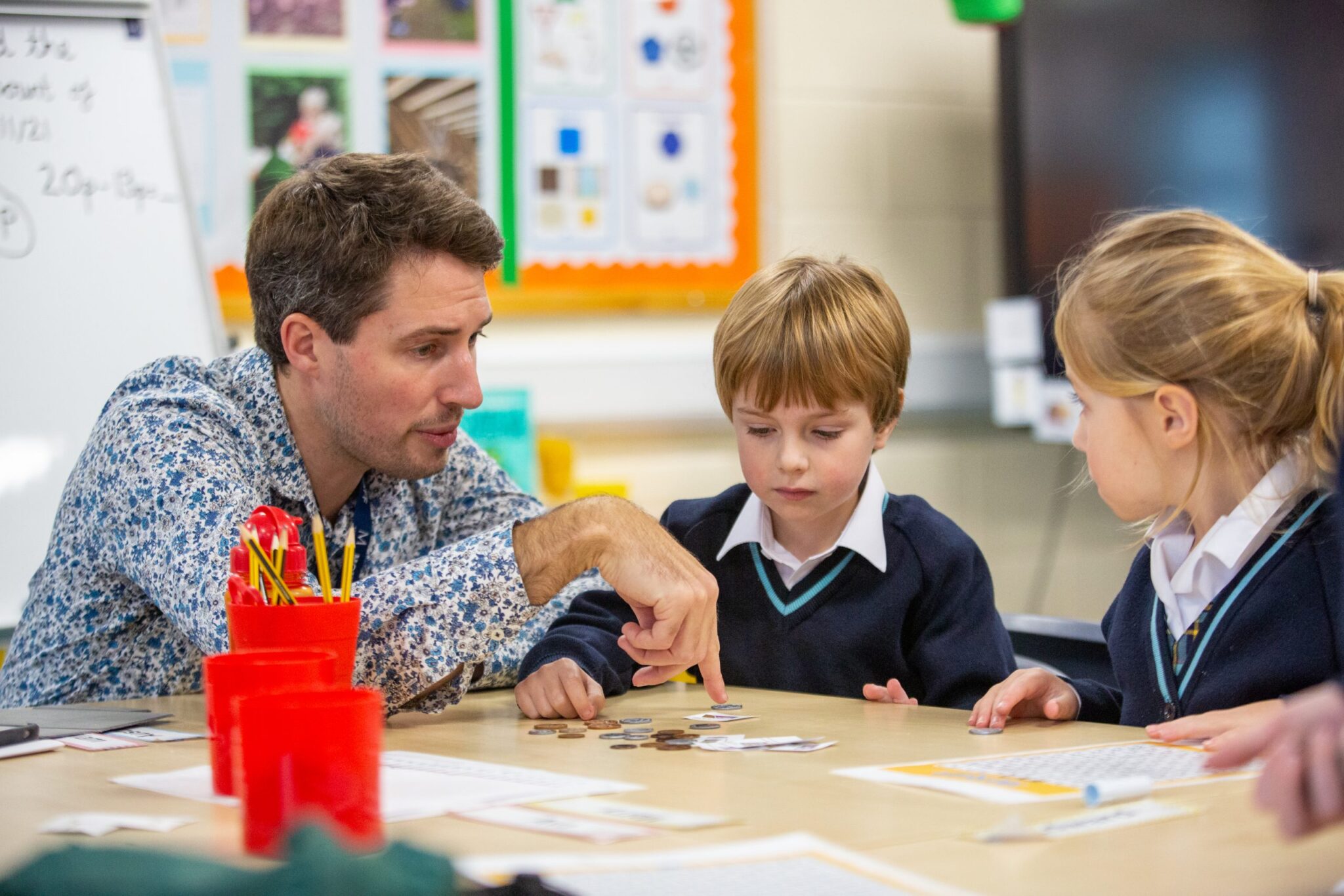Building a fundraising programme from the ‘ground up’ can bring disparate school communities together, writes Bill Friar from Haberdashers’ Elstree Schools
The two Haberdashers’ Elstree Schools – Habs Boys and Habs Girls – share a founder, a governing body and a 100-acre campus some 15 miles northwest of central London. Until recently they shared little else but a tacit agreement to politely but studiously ignore each other’s existence.
The schools are separated by a terracotta wall low enough to jump over but, to generations of students and staff, as psychologically insurmountable as the one that separated the two sides of Berlin.
Governors appointed Gus Lock to be headmaster of Habs Boys in 2018 and his Girls’ school counterpart, Rose Hardy, was in place a year later with a mandate to work together and pool resources where possible.
“Until recently, the schools studiously ignored each other.”
They began by gradually merging back-office and support functions – IT, HR, Finance, Estates – eliminating duplicate systems and taking advantage of economies of scale.
Despite this harmonisation, the schools and the education they provided remained largely separate and independent. The aim is the best of both worlds – “delivering outstanding single-sex education in a co-educational environment”.
There were to be a few cracks in the terracotta, however: as of this year: sixth form students are required to take at least one A-level course at the other school, giving them more A-level options and preparing them for the coeducational world that awaits them post Habs.
A few new professional services directors were appointed jointly across the two schools. That included me; I joined the schools as director of development in January 2021, just as the third Covid lockdown began.
I needed to ask some questions to get a development plan in place; these questions which will be familiar to any fundraising team planning for the future.
Where are we now?
Unfortunate timing aside, it was an exciting development prospect, particularly as it involved finding common purpose across a pair of schools with such a complex relationship.
“Both schools had virtually no fundraising and only sporadic alumni engagement.”
Here’s what I found in answer to my question: a nearly 350-year-old boys’ school with a reputation for shaping some of the sharpest young minds in the country, and a younger sister, nearly 200 years its junior, which had speedily caught up with its elder sibling. Over the years they had evolved quite distinct school cultures; they had different traditions, different styles, even different dress codes.
They did have two things in common: virtually no fundraising and only sporadic alumni engagement.
In some ways this was a blessing; we could build our development effort from the ground up.
Or rather, our development efforts, plural. It quickly became obvious we needed separate alumni approaches. We appointed one alumni officer for each school. They work closely together, but one is “embedded” in each school to better understand the needs and interests of that school, their students and their alumni.
Where do we want to go?
The schools in 2021 were at different waypoints along their fundraising journey. Though neither had got too far, the boys’ school had at least made a start, primarily through the odd alumni telephone campaign. The girls’ school had not attempted even this. And neither school had ever asked their parents for anything.
So where to begin? The top priority for both schools was increasing means-tested bursary support. That clarity and unanimity of purpose was a good starting point.
But as we delved deeper, things quickly got hazy. Do we want more bursary students, more support for existing ones, or both? What should our targets be? And crucially, why does this all matter – what exactly are we aiming to achieve?
“The top priority for both schools was increasing means-tested bursary support.”
Even our current bursary provision was not widely known, including within the schools. Many were stunned to learn the schools together were awarding around £3m each year, supporting the families of approximately 160 children throughout their time at Habs. Nearly all of this funding came through core funds; if we wanted to do much more, philanthropic support would be essential.
Next came the “Time of Many, Many Meetings” – with senior leadership, the governing body, the foundation board, parents, alumni, you name it. After much discussion, debate and analysis, we had clear objectives:
- Focus our bursary funding where it would be transformational: we agreed to support capable and hard-working students from low-income families for whom a Habs education would otherwise be impossible. Most new bursaries would cover all costs, and none would be less than 50 per cent.
- Actively recruit among families in nearby communities who assume Habs is only for the wealthy. For schools used to turning away most applicants rather than seeking them out, this required a shift in mindset, a marketing strategy and a commitment to building relationships through genuine, mutually beneficial community partnerships.
- Steadily increase our bursary provision – from 10 per cent to 20 per cent of all students – with the ultimate goal of offering means-blind admission. We will work towards the day when we can accept any student who would thrive here, regardless of family finances.
We also can now answer the question of why we are doing this; in a nutshell, we are schools founded on philanthropy, community and social mobility, and we have recommitted ourselves to those founding principles.
All simple enough, one might think, but it took us a year to get there. That’s as it should be; we now have what fundraisers term a “case for support” and, as those who have gone through the process know, building a case requires achieving consensus across your entire institution and its constituent groups, and that takes at least a year to agree what you aim to do and why. It also requires tough decisions about what you won’t do.
“Your fundraising ambitions and measures of success may be entirely different from ours.”
This is probably the most important task for any school – or schools – aiming to use fundraising to bring communities closer together for a common purpose. Your fundraising ambitions and measures of success may be entirely different from ours. But your chances of success will be greatly improved if you take the time to include your communities in determining them.
How do we get there?
Now we knew what we were asking for, why we were asking for it and why our supporters would want to support it, it was time to actually start asking. So we did, with promising early results.
But the floodgates truly opened when we decided to launch our first-ever giving day, in March 2022. It was to be the first big joint event the schools had ever attempted.
This was risky. Schools with little history of fundraising have few established donors and no clear evidence of what works and what doesn’t. It could easily have flopped, and few fails are as painfully public as throwing a fundraising party and having no one show up.
We spent months explaining to everyone in the schools, from senior leadership to junior students, what we were planning to do and asking for their help in putting it together.
“Few fails are as painfully public as throwing a fundraising party and having no one show up.”
This was the fun bit. We wanted to cause as little disruption as possible to the school day, so we pegged our main giving day activity to the Habs Dash, a popular 3.5 kilometre run around campus for students and staff that is held every Tuesday lunchtime during term time. We set challenges for the runners that, if achieved, would unlock additional funds pledged by donors.
We also asked prefects at each school if they had a special project they would like us to raise money for, fully expecting them to suggest something like a coffee machine for the common room.
Instead, they suggested a travel fund for bursary students. They knew that students on full bursaries received support for academic trips, but their families often could not afford the fun, optional trips available to those from better-off families. They did not want any of their schoolmates to be left out. And that is the cause they run to support on Habs Giving Day each year.
“One gift was for £10, from a girls’ school alumna, class of 1938.”
We have held two Habs Giving Days so far, the most recent in March. On a typical Tuesday, a Habs Dash attracts 150-200 runners. This year’s Habs Giving Dash drew 1,529. That included 300 parents who showed up on a freezing morning to run alongside their children.
Together, those two days have raised enough money to fund 13 full bursaries, and we now have a permanent, growing travel fund that is allowing more and more excited young people to join special trips.
Two memorable gifts from this year’s giving day illustrate the progress we are making in bringing our disparate communities together for something more important than which side of the wall we’re from.
The first was from a former boys’ school parent, with no current ties to the school. She made a gift of £30,000 so more students could have the opportunities her son enjoyed. The other was for £10, from a girls’ school alumna. We noticed it came from a care home, so we looked her up: she is a member of the Class of 1938. She turns 104 this December.
Categories: News


